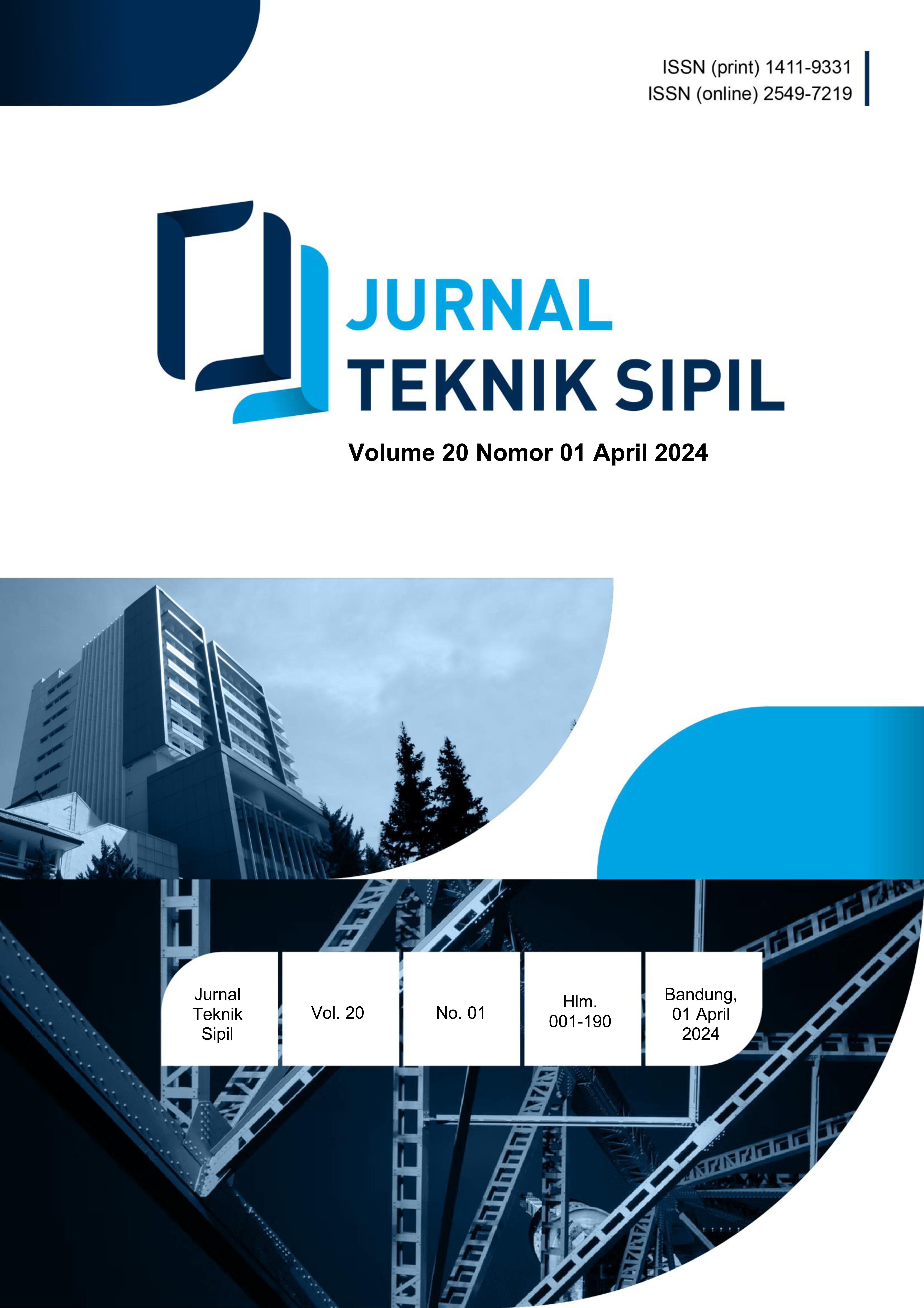Penilaian Kepuasan Penghuni Perumahan Menggunakan Gap Analysis: Studi Kasus di Kota Naypyitaw, Myanmar
DOI:
https://doi.org/10.28932/jts.v20i1.7428Kata Kunci:
Gap Analysis, Hunian yang Disediakan Pemerintah, Kepuasan, Kota Layak Huni, PenghuniAbstrak
Penelitian ini melakukan evaluasi kepuasan penghuni kompleks apartemen empat lantai yang disediakan pemerintah di kawasan perumahan pegawai negeri di Kota Naypyitaw, Myanmar. Karena pembangunan gedung-gedung apartemen terus dilakukan untuk memenuhi kebutuhan perumahan para pegawai negeri sipil, pemahaman terhadap faktor-faktor yang menentukan kepuasan penghuni menjadi sangat penting. Studi mencakup data yang dikumpulkan dari 500 rumah tangga melalui kuesioner terstruktur menggunakan pendekatan multi-cluster sampling. Kuesioner menggunakan Skala Likert lima poin untuk mengukur tingkat kepentingan dan kepuasan responden. Gap Analysis digunakan untuk meneliti data yang terkumpul. Pada akhirnya teridentifikasi tujuh atribut penting yang berpotensi meningkatkan kepuasan hunian secara substansial, meliputi: tinggi plafon, denah tata letak apartemen, dimensi ruangan dan koridor, jumlah ruangan, desain tangga, hubungan lingkungan, dan kedekatan dengan Kantor Polisi. Berdasarkan hasil tersebut, rekomendasi disampaikan terkait modifikasi dan evaluasi ulang ketujuh atribut dalam pembangunan perumahan di masa depan. Hal ini menggarisbawahi pentingnya menciptakan kota yang layak huni dengan memastikan penyediaan layanan penting di dekat kawasan pemukiman.Unduhan
Referensi
Aigbavboa, C., & Thwala, W. (2016). A notional appraisal of the bases of housing satisfaction. International Journal for Housing Science and Its Applications, 40(2), 133–145.
Aung, M. (2019). Smart City Action Plans ( SCAPs ) for Nay Pyi Taw. https://www.ur-net.go.jp/overseas/AseanSmartCityNetwork/lrmhph00000162t5-att/Nay_Pyi_Taw.pdf
Balestra, C., & Sultan, J. (2013). Home Sweet Home: The Determinants of Residential Satisfaction and Its Relation with Well-Being. Working Paper. OECD Statistics Working Paper Series, STD/DOC(2013)5, 42. http://www.oecd.org/officialdocuments/publicdisplaydocumentpdf/?cote=STD/DOC(2013)5&docLanguage=En
Cochran, W. G. (1977). Sampling Technique’s third edition.
Myanmar National Building Code, (2020) (testimony of Department of Building & Ministry of Construction). https://myanmar-law-library.org/spip.php?page=pdfjs&id_document=1567
Francescato, G., Weidemann, S., & Anderson, J. R. (1989). Evaluating the Built Environment from the Users’ Point of View: An Attitudinal Model of Residential Satisfaction. In Building Evaluation (pp. 181–198). Springer, Boston, MA. https://doi.org/10.1007/978-1-4899-3722-3_14
Henderson, C. G. (1988). The influence of housing satisfaction on job satisfaction, job performance and overall quality of life. Dissertation Abstracts International, 446. https://doi.org/10.31274/RTD-180813-8669
Hur, M., & Morrow-Jones, H. (2008). Factors that influence residents’ satisfaction with neighborhoods. Environment and Behavior, 40(5), 619–635. https://doi.org/10.1177/0013916507307483
Ibem, E. O., Opoko, A. P., Adeboye, A. B., & Amole, D. (2013). Performance evaluation of residential buildings in public housing estates in Ogun State, Nigeria: Users’ satisfaction perspective. Frontiers of Architectural Research, 2(2), 178–190. https://doi.org/10.1016/j.foar.2013.02.001
Kabisch, S., Poessneck, J., Soeding, M., & Schlink, U. (2020). Measuring residential satisfaction over time: results from a unique long-term study of a large housing estate. Housing Studies, 0(0), 1–19. https://doi.org/10.1080/02673037.2020.1867083
Kiel, K., & Carson, R. (2020). An Examination of Systematic Differences in the Appreciation of Individual Housing Units. Https://Doi.Org/10.1080/10835547.1990.12090630, 5(3), 301–318. https://doi.org/10.1080/10835547.1990.12090630
Levenburg, N. M., & Magal, S. R. (2004). Applying Importance-Performance Analysis to Evaluate E-Business Strategies among Small Firms. E-Service Journal, 3(3), 29–48. https://doi.org/10.1353/esj.2005.0012
Likert, R. (1932). A Technique for the Measurement of Attitudes. Archives of Psychology, 140, 44–53.
MC Gill University Services. (2015). Building Design Standards, Special Building Areas: Corridors and Hallways.
Parker, C., & Mathews, B. P. (2001). Customer satisfaction: Contrasting academic and consumers’ interpretations. Marketing Intelligence & Planning, 19(1), 38–44. https://doi.org/10.1108/02634500110363790
Shia, B. C., Chen, M., Ramdansyah, A. D., & Wang, S. (2016). Measuring Customer Satisfaction toward Localization Website by WebQual and Importance Performance Analysis (Case Study on AliexPress Site in Indonesia). American Journal of Industrial and Business Management, 06(02), 117–128. https://doi.org/10.4236/ajibm.2016.62012
Somiah, M. K., Aidoo, I., & Braimah, A. (2017). An Empirical Enquiry into the Attributes of Residential Satisfaction that Predict Students’ Satisfaction in Public Halls of Residence in Technical Universities in Ghana. International Journal of African and Asian Studies.
Yusoff, F. (2017). Residential Satisfaction in Military Family Housing.
##submission.downloads##
Diterbitkan
Cara Mengutip
Terbitan
Bagian
Lisensi
Hak Cipta (c) 2024 Pan Ei Phyu, Nursyirwan Effendi, Purnawan Purnawan

Artikel ini berlisensi Creative Commons Attribution-NonCommercial 4.0 International License.
















